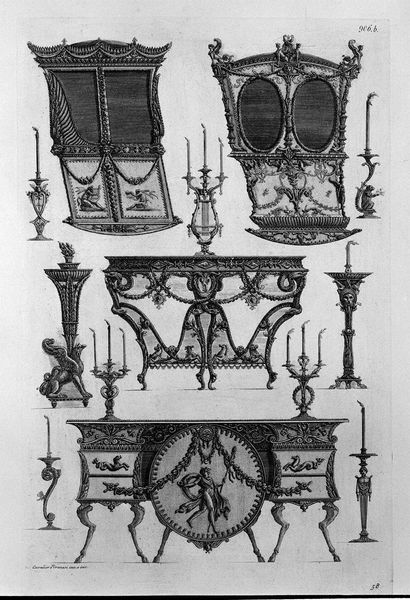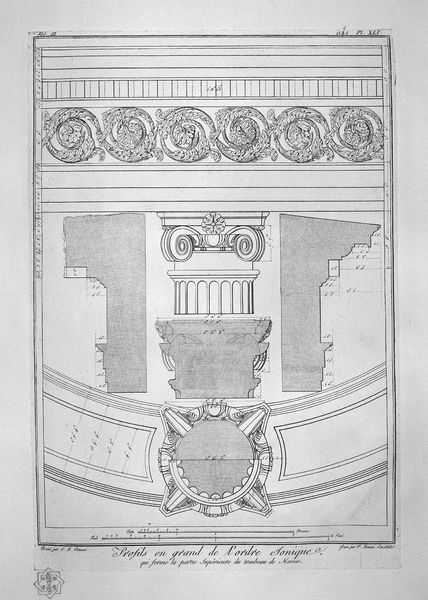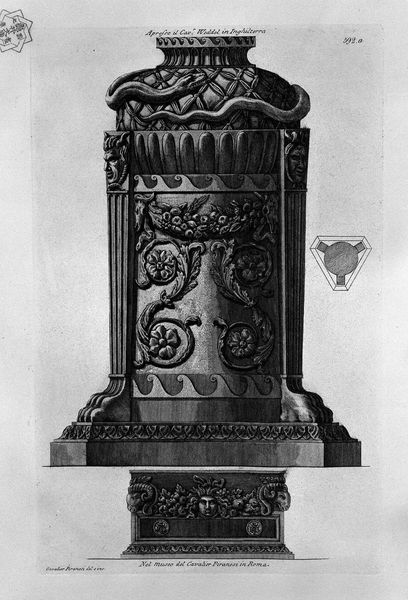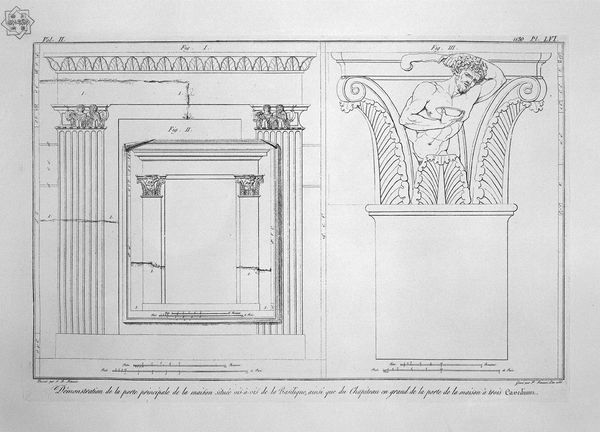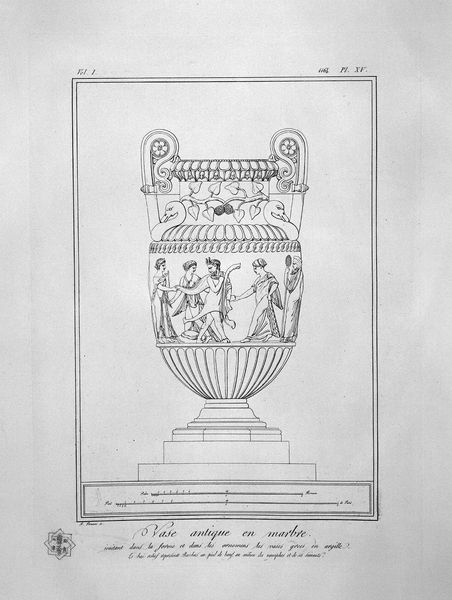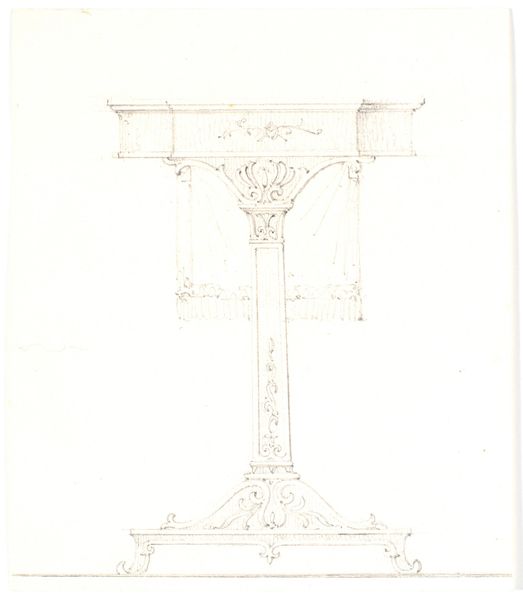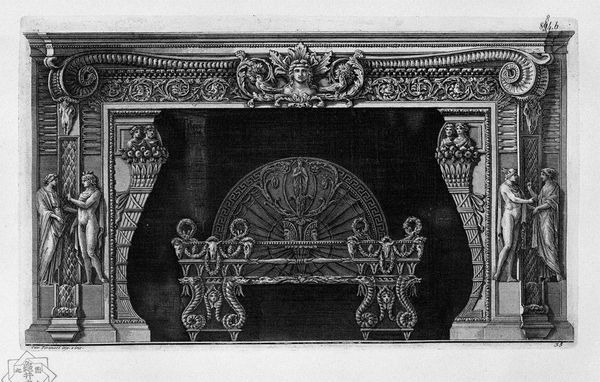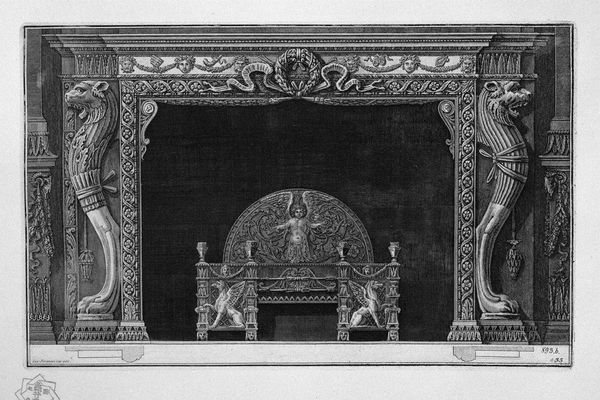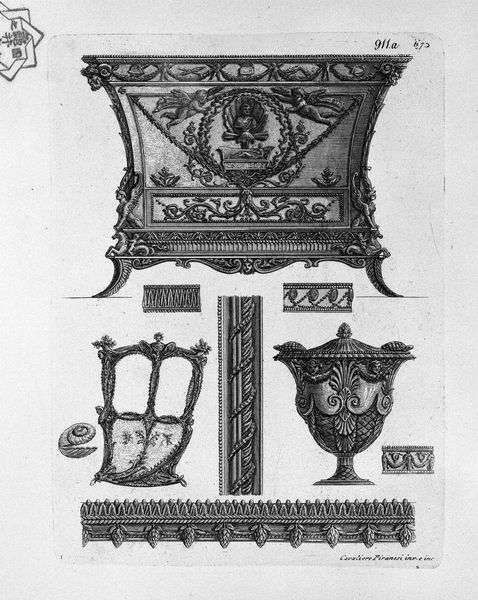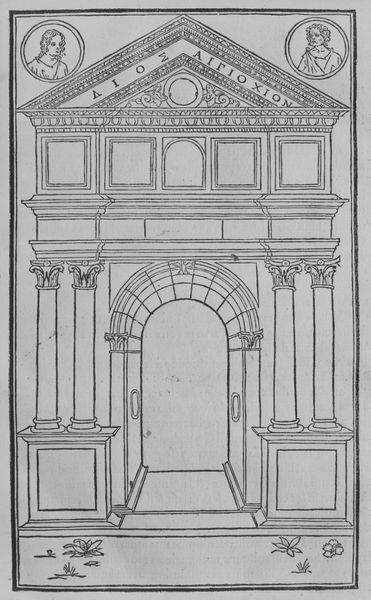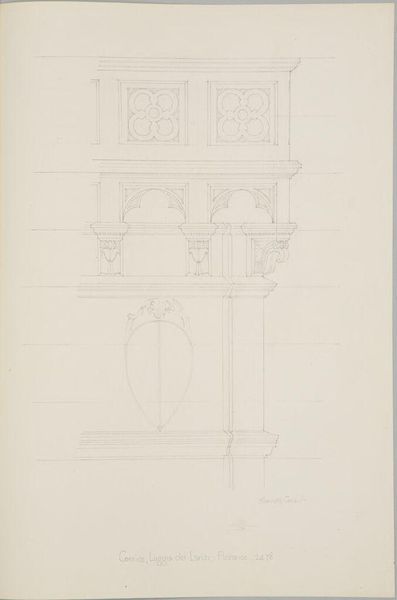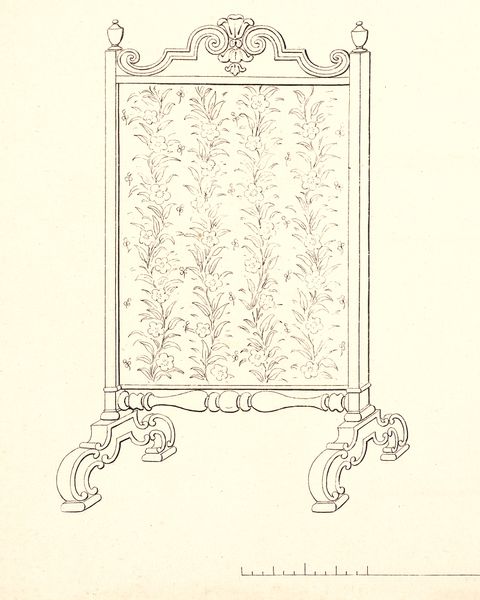
drawing, silver-point, engraving
#
drawing
#
neoclacissism
#
statue
#
classical-realism
#
form
#
geometric
#
ancient-mediterranean
#
line
#
silver-point
#
history-painting
#
engraving
Copyright: Public domain
Editor: Here we have an engraving by Giovanni Battista Piranesi titled "Tripod with Sphinxes, found at Herculaneum". The sharp, clean lines give it a very precise and almost clinical feel, despite the fantastical creatures depicted. It’s like an architectural drawing but of an ornate object. What is your take on this piece? Curator: This meticulous drawing highlights the 18th-century obsession with classical antiquity, specifically fueled by the excavations at Herculaneum and Pompeii. Piranesi wasn’t just documenting a find; he was participating in a larger cultural project. It shows the rise of Neoclassicism and how archaeological discoveries fueled artistic and political agendas. The "authentic" was extremely impactful and the find itself legitimized cultural production. Notice how the drawing style itself imitates the linear precision that was prized at the time. It gives this piece its “truthful” attribute, seemingly a realistic interpretation, doesn’t it? Editor: Yes, I see how the style lends it that sense of authority. But beyond documentation, what was the effect of these reproductions circulating? Curator: Disseminating these images through engravings like this gave wide access to antiquity, not just for artists and architects, but also for the burgeoning middle class interested in cultivating a taste for the “antique.” It influenced design, fashion, and even political rhetoric. Classical imagery became a signifier of sophistication, virtue, and power. Think about how influential classical columns are, still today! What political aspirations do you imagine fueled these depictions and imitations? Editor: It is fascinating to think about how a drawing can be part of such a larger cultural and political moment. Now that you mention the political dimensions, the drawing makes me think about the appropriation of culture. Curator: Exactly, that is part of Neoclassicism! I think that focusing on the institutional reception really shifts perspective here.
Comments
No comments
Be the first to comment and join the conversation on the ultimate creative platform.
